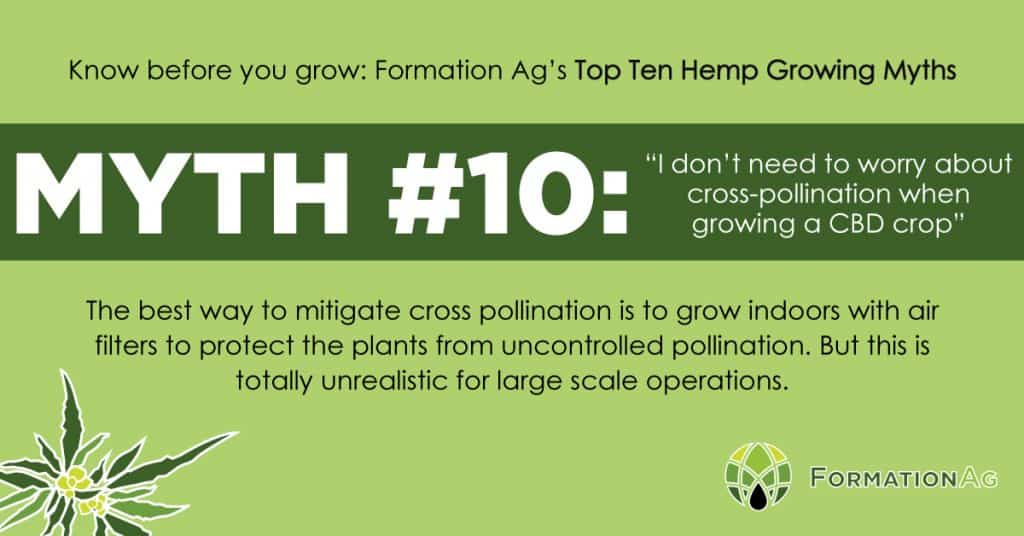
There is no clear answer.
There is very little research published to verify or deny this myth.
Pollination can occur solely by wind from 600 feet up to 6,000 miles. The more secluded and protected a hemp field, the lower chances of pollination. In the state of Colorado during the 2019 growing season, very few farms did not get pollinated by other farmers, ditch weed, or other unknown sources.
The best way to mitigate cross pollination is to grow indoors with air filters to protect the plants from uncontrolled pollination. But this is totally unrealistic for large scale operations.
Cross-pollination should be a factor when determining your business plans as some products may not be sellable with seed. However, many CBD farmers are still generating great returns on their crop even after cross pollination, or even in intentional pollination. They have developed business models that are strong even with pollination.
How much does pollination affect a plant? Our conversations with farmers who test their crops regularly, pollination does not reduce the percentage of CBD in a crop between the time of pollination and the time of harvest. Once CBD in the plant is produced, it will stay in the plant.
However, pollination begins the process of putting effort into developing seed. It seems that the plant does not continue to produce CBD and will result in lower final concentrations despite the genetics which renders the question, “are expensive genetics worth it?”
Most farmers who expect pollination will begin their harvest before seeds are developed to reduce the amount of seeds collected. Others will undergo a pre-processing cleaning process. This should be considered while developing a business plan.
From Formation Ag’s perspective, a well planned out growing strategy takes cross pollination into account and can be taken care of without a loss of buyers, products, or profits.


I was reading through some of your blog posts on this website and I believe this site is very instructive! Retain putting up. Cathee Isador Noami
You have noted very interesting points! ps nice site. Maurita Otho Wilek
Having read this I believed it was really enlightening. Eda Vin Stormy
Thanks so much for the blog post. Thanks Again. Cool. Malorie Eldredge Howey
I am regular reader, how are you everybody? This piece of writing posted at this website is in fact pleasant. Salaidh Alex Jacoba
You made some decent points there. I did a search on the subject and found most guys will agree with your blog. Merci Abbie Guenna
Its going to be ending of mine day, but before finish I am reading this great paragraph to improve my knowledge. Carmella Rodney Jarlathus
Good luck, hope this review helps you in your decision. Giovanna Ferdy Raynata
Looking forward to reading more. Great blog article. Much obliged. Rozelle Iggy Cliff
Way cool! Some extremely valid points! I appreciate you writing this article and the rest of the website is also very good. Ardath Nathanael Phiona